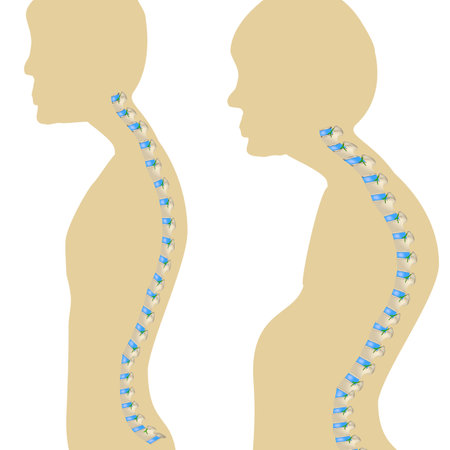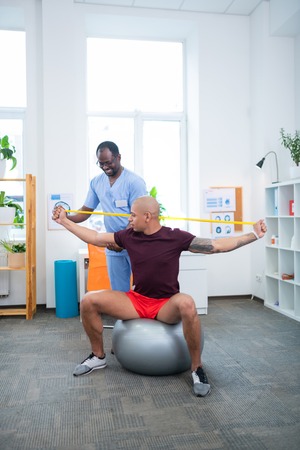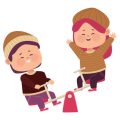Understanding Developmental Delays in Pediatrics
Developmental delays are common challenges faced by children across the United States. These delays mean that a child is not reaching certain milestones—such as walking, talking, or socializing—at the expected age. Recognizing and understanding these delays is crucial for families, caregivers, and professionals who support childrens growth.
Overview of Developmental Delays
Developmental delays can affect one or more areas of a childs development. These include:
| Type of Delay | Description | Common Early Signs |
|---|---|---|
| Motor Skills | Trouble with movement or coordination (e.g., crawling, walking) | Not sitting up by 9 months, not walking by 18 months |
| Speech and Language | Difficulties in understanding or using language | No babbling by 12 months, no single words by 16 months |
| Cognitive Skills | Problems with thinking, learning, or problem-solving | Trouble following simple directions, difficulty with memory tasks |
| Social and Emotional | Challenges in interacting with others and managing emotions | Lack of eye contact, not responding to name, limited interest in play with others |
Potential Causes of Developmental Delays
There are many reasons why a child may experience developmental delays. Some common causes include:
- Genetic conditions: Such as Down syndrome or Fragile X syndrome.
- Premature birth: Babies born early are at higher risk for delays.
- Complications during pregnancy or birth: Lack of oxygen or infections can impact development.
- Environmental factors: Exposure to toxins, malnutrition, or neglect may play a role.
- Unknown causes: Sometimes, the exact cause isn’t clear even after evaluation.
The Importance of Early Intervention
Spotting early signs of developmental delays makes a big difference. In the U.S., programs like Early Intervention (EI), supported by federal law (IDEA Part C), offer services for infants and toddlers who show signs of delay. The earlier children get help—through therapies, assistive technology, or specialized instruction—the better their chances to reach their full potential. Early support also helps families learn how to encourage development at home and advocate for their child’s needs.
Types of Assistive Technology for Pediatric Rehabilitation
Overview of Common Assistive Technologies
In American pediatric rehabilitation settings, a variety of assistive technologies are available to support children with developmental delays. These tools help kids communicate, move around, and participate more fully in daily activities. Below is a table summarizing some of the most commonly used types:
| Type of Technology | Purpose | Examples |
|---|---|---|
| Communication Devices (AAC) | Helps children express their needs, thoughts, and feelings if they have speech or language difficulties. | Speech-generating devices (SGDs), iPad apps like Proloquo2Go, picture exchange systems (PECS) |
| Mobility Aids | Supports children who have trouble walking or moving independently. | Pediatric wheelchairs, walkers, gait trainers, standing frames |
| Adaptive Software & Apps | Makes learning and participation easier by customizing technology to the childs needs. | Reading software, on-screen keyboards, text-to-speech programs |
| Environmental Control Units (ECUs) | Allows kids to control things in their environment, like lights or toys, often through switches or voice commands. | Alexa-enabled devices, switch-activated toys, adaptive remote controls |
| Sensory Tools | Assists children who need extra sensory input or calming strategies. | Weighted blankets, noise-cancelling headphones, sensory integration apps |
Communication Devices (AAC)
Augmentative and Alternative Communication (AAC) devices are widely used in the U.S. for kids who find it hard to speak. These range from simple picture boards to high-tech speech-generating tablets. Using AAC helps children join conversations at school and home, boosting confidence and social skills.
Mobility Aids
Mobility aids give children more freedom to explore their world safely. Physical therapists often recommend walkers or wheelchairs based on each child’s strength and motor abilities. In many American schools and clinics, gait trainers and standing frames are also used so kids can practice walking or standing while being supported.
Adaptive Software & Apps
Technology has made learning more accessible for all children. Adaptive software can include screen readers for those with vision issues or apps that turn written words into spoken language. Many classrooms use these tools so every child can follow lessons and complete assignments.
Environmental Control Units (ECUs)
With ECUs, children can operate household items—like lights or TVs—using switches or their voices. This independence is especially important in American homes where accessibility is a priority. Smart home technology continues to make ECUs more user-friendly and affordable.
Sensory Tools
Sensory tools help manage overstimulation or provide calming effects for children with sensory processing challenges. Therapists often recommend items like weighted vests or fidget toys to support focus during therapy sessions and schoolwork.

3. Integrating Assistive Technology into Therapy Plans
Understanding the Child’s Unique Needs
Every child with developmental delays is different, and their therapy plans should reflect their unique strengths, challenges, and goals. When introducing assistive technology (AT), it’s important to assess the childs specific abilities, interests, and daily routines. This ensures that AT tools are not only helpful but also meaningful in the child’s everyday life.
Steps for Personalizing AT in Pediatric Rehabilitation
| Step | Description | Tips for Success |
|---|---|---|
| 1. Team Collaboration | Work closely with therapists, teachers, doctors, and family members. | Hold regular meetings to discuss progress and challenges. |
| 2. Family Involvement | Listen to the family’s values, preferences, and cultural background. | Provide training and support so families feel confident using AT at home. |
| 3. Child-Centered Assessment | Evaluate what the child enjoys and where they need help most. | Observe the child in natural settings like home or school. |
| 4. Matching AT Tools to Needs | Select devices that support specific therapy goals and daily activities. | Start simple—consider low-tech options before moving to high-tech solutions. |
| 5. Ongoing Adjustment | Monitor how well the technology is working and make changes as needed. | Be flexible—children grow and their needs change over time. |
Best Practices for Incorporating Assistive Technology
- Choose Age-Appropriate Tools: Make sure devices are suitable for the child’s age and development level.
- Create Fun Learning Opportunities: Use apps or devices that keep therapy playful and engaging.
- Cultural Sensitivity: Respect family traditions and language preferences when choosing AT solutions.
- Simplify Instructions: Break down steps so both children and caregivers can use the technology with ease.
- Encourage Independence: Select tools that let the child do more on their own, building confidence along the way.
- Regular Feedback: Check in often with families to see what’s working and what isn’t, then adjust as needed.
Examples of Assistive Technology in Action
| Goal Area | Example Technology | Cultural & Family Considerations |
|---|---|---|
| Communication | Speech-generating devices (SGDs) | Select voices or languages familiar to the family; include favorite topics or greetings. |
| Dressing Skills | Pictorial step-by-step apps on a tablet | Add photos of the child’s own clothes or routines for familiarity. |
| Learner Engagement | Sensory switches or adapted toys | Incorporate culturally relevant music or images that matter to the family. |
Key Takeaway for Families and Therapists
The best therapy plans are built together—by therapists, families, and children. By focusing on each child’s unique needs and keeping family preferences at the center, assistive technology becomes a powerful tool for growth, independence, and joy in pediatric rehabilitation.
4. Collaboration with Families, Schools, and Multidisciplinary Teams
The Importance of Teamwork in Pediatric Rehabilitation
When it comes to using assistive technology (AT) for children with developmental delays, working together is key. No single professional or family member can do it all alone. Therapists, families, educators, and healthcare professionals each bring unique perspectives and skills to help the child grow and succeed. Effective teamwork ensures that the child’s needs are met across different settings—at home, in school, and during therapy sessions.
Strategies for Effective Teamwork
1. Open Communication
Regular updates and honest conversations between team members help keep everyone on the same page. This means sharing both successes and challenges so adjustments can be made quickly.
2. Setting Shared Goals
Everyone involved should agree on what the main goals are for the child’s development and how AT will support those goals. Clear goals make it easier to track progress and celebrate achievements.
3. Training and Support for Families and Educators
Parents and teachers need to feel confident using assistive technology. Providing simple training sessions, written instructions, or demonstration videos can make a big difference in how well AT is used at home or school.
4. Regular Team Meetings
Scheduling meetings—whether in person or virtually—helps keep everyone updated on the child’s progress. These meetings are also a great time to brainstorm new solutions if something isn’t working as planned.
Roles Within the Team
| Team Member | Main Role in AT Support |
|---|---|
| Therapists (OT/PT/SLP) | Assess needs, recommend devices, provide training |
| Families/Caregivers | Use AT at home, share daily observations, reinforce skills |
| Educators/School Staff | Integrate AT into classroom routines, monitor academic use |
| Pediatricians/Healthcare Professionals | Monitor health impacts, coordinate care plans, offer referrals |
| AT Specialists/Consultants | Select devices, provide technical support/troubleshooting |
Cultural Sensitivity and Community Involvement
Being respectful of each family’s cultural background helps build trust within the team. Listening to family preferences and considering their values when choosing assistive technology makes collaboration more effective.
5. Challenges and Success Stories in the U.S. Context
When it comes to using assistive technology (AT) in pediatric rehabilitation for developmental delays, families and professionals across the United States face both obstacles and opportunities. Lets explore some common challenges and highlight real-life stories that show how AT can make a difference in American communities.
Common Barriers to Accessing Assistive Technology
| Barrier | Description | Impact on Families |
|---|---|---|
| Cost and Funding | AT devices and software can be expensive, and insurance coverage varies widely. | Families may delay or avoid getting needed technology due to high out-of-pocket costs. |
| Lack of Awareness | Parents, teachers, and even some healthcare providers may not know what technologies are available or appropriate. | Children might miss out on tools that could support their development. |
| Complex Application Processes | Navigating school systems or Medicaid waivers for AT can be overwhelming. | This can lead to frustration and slower access to helpful devices. |
| Limited Training & Support | Once a device is provided, families often need more guidance on effective use. | Ineffective use can reduce the benefits of AT for the child’s progress. |
Inspiring Real-Life Success Stories
The Story of Emma: Communication Breakthrough with AAC Devices
Emma, a 6-year-old from Ohio with autism spectrum disorder, struggled with verbal communication. Her speech therapist recommended an augmentative and alternative communication (AAC) app on a tablet. With regular practice at home and school, Emma began expressing her needs and feelings, building stronger connections with her classmates. Her mom says, “The technology gave Emma a voice when words were hard.”
The Case of Jackson: Gaining Independence with Mobility Aids
Jackson, age 8, living in Texas, was diagnosed with cerebral palsy. His physical therapist worked closely with the family to secure funding through a local nonprofit for a powered wheelchair. Jackson now participates in community sports and attends birthday parties independently. His dad shares, “Having the right chair changed our daily life—we’re no longer limited by what he can’t do.”
Mia’s Learning Journey: Overcoming Dyslexia with Reading Software
Mia, a third-grader in California, found reading overwhelming because of dyslexia. With her teacher’s help, she started using text-to-speech software provided by her school district. Today, Mia enjoys reading stories and has caught up academically with her peers. Her teacher notes, “With technology tailored to Mia’s needs, her confidence has soared.”
Community Support Makes a Difference
Across the U.S., parent groups, nonprofits, schools, and rehabilitation teams are working together to address barriers and share information about assistive technology. By connecting families with resources—like loan libraries for devices or workshops on AT use—communities help kids reach their full potential despite developmental delays.


